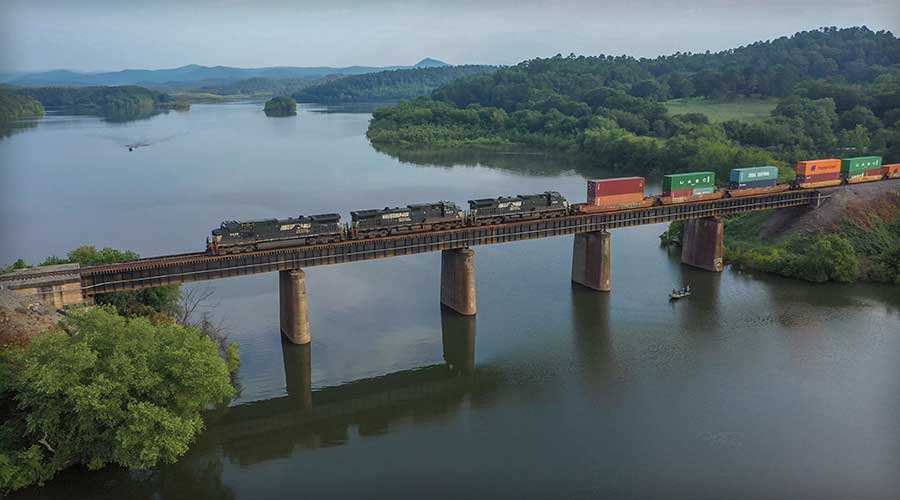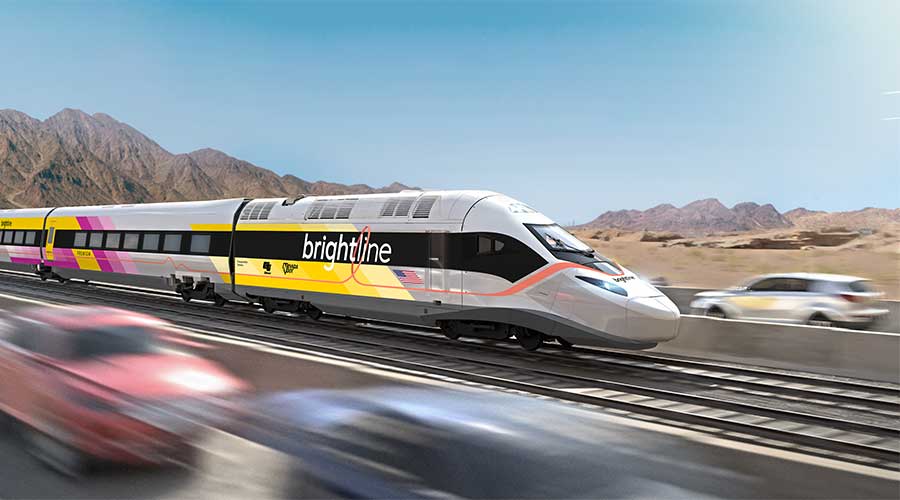Stay updated on news, articles and information for the rail industry
November 2020
Rail News: Passenger Rail
MTA seeks federal help in saving New York City's subway
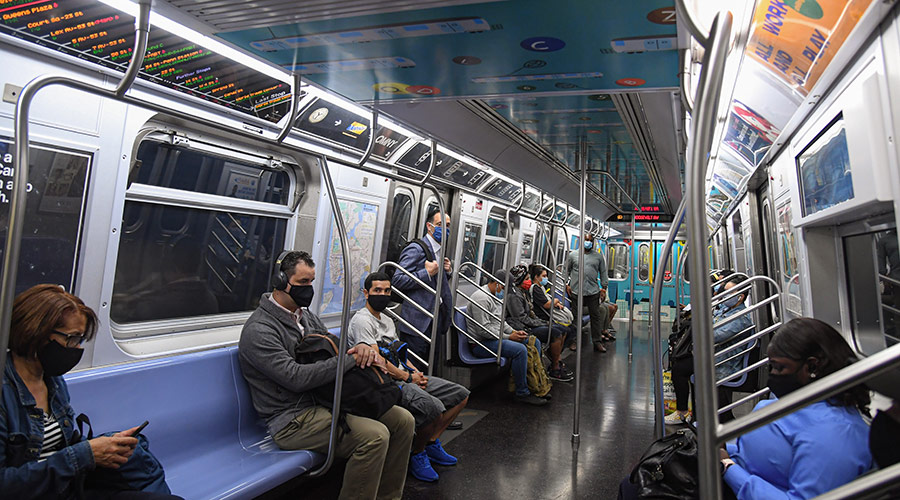
By Julie Sneider, Senior Associate Editor
In September, the Metropolitan Transportation Authority (MTA) warned its largest rail suppliers that without an immediate injection of billions of dollars in federal stimulus money, all of the New York City transit agency's future and current contracts would be in jeopardy.
In letters sent Sept. 17 to major companies such as Alstom, Bombardier Transportation and Siemens Corp., MTA Chairman and Chief Executive Officer Patrick Foye explained that the financial situation the authority is facing is due to the staggering ridership and revenue losses that have occurred since the COVID-19 pandemic struck the United States.
Every week, MTA's network — which includes New York City Transit (NYCT) subway service and the Metro-North and Long Island commuter railroads — is registering $200 million in revenue losses from missed fares, tolls and subsidies, as well as higher expenses related to keeping trains and buses running during a pandemic, Foye's letter explained. For the full year 2020, MTA leaders expect $4.2 billion in fare losses, $2.1 billion in reduced subsidies, $880 million in toll losses and $500 million in increased expenses.
"I am writing to alert you that because of this financial devastation, many current and all future contracts are in jeopardy without an injection of $12 billion in emergency federal aid," Foye wrote. "In response to the COVID crisis, the MTA has implemented immediate and aggressive cost controls, including undertaking a thorough review of all new and planned expenditures."
The agency has already frozen most of its contracts and paused its 2020-2024 capital program. Based on previous MTA capital plans, the national impact of the $52 billion plan was "expected to be extraordinary," Foye's letter stated.
"We estimate that every $1 million of MTA capital spending creates approximately 13 jobs across the country," he wrote.
Foye's supplier letter portrays just one example of the economic fallout resulting from the pandemic. Over the past few months, MTA leaders and other transit industry executives have been sounding the alarm over what could happen to U.S. public transportation providers if Congress and the White House don't reach an agreement on a new federal stimulus package that includes as much as $36 billion in emergency aid to keep the transit industry afloat.
In New York City alone, MTA's situation is an unprecedented crisis that eclipses even the Great Depression's impact on the subway and other transportation services, authority officials have said. As Foye himself described it in a recent op-ed in the New York Times, the NYCT subway system is "facing a five-alarm fire" due to its lost revenue and increased costs.
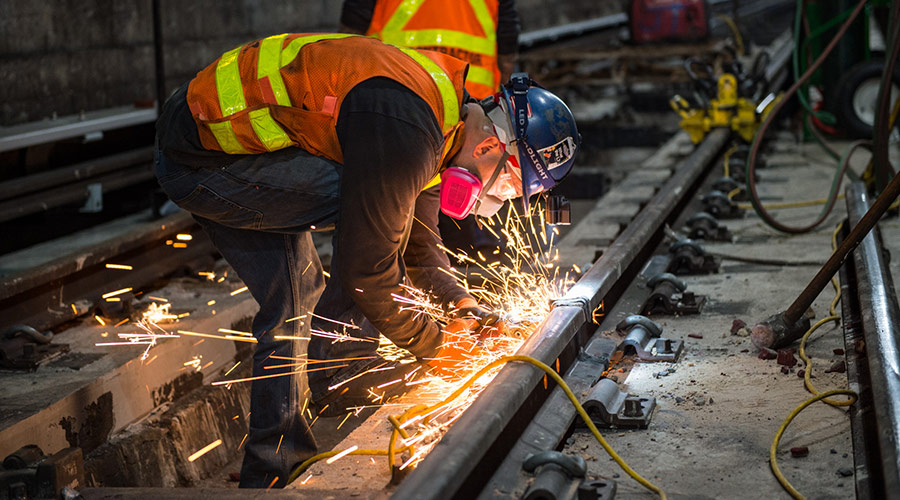
After Gov. Andrew Cuomo in March ordered all non-essential businesses to close to slow the virus' spread in the state, NYCT's subway ridership plunged 90 percent in April. Since then, ridership has rebounded somewhat as parts of the economy have reopened. Still, subway passenger counts were down by around 70 percent as of mid-October.
Although transit systems across the nation have also been devastated, nowhere has the crisis been more acute than in New York at the MTA, according to Foye's Sept. 17 letter. The letter was just part of MTA's forewarning of what could happen should the federal government fail to come through with another relief package. (As of press time in late October, the U.S. Senate had adjourned until after the Nov. 3 presidential election without passing pandemic-related legislation.)
Funding that MTA received in April under the Coronavirus Aid, Relief, and Economic Security (CARES) Act — which amounted to about $3.9 billion — was spent before the end of July. Now the authority says it needs an injection of $12 billion to help cover operating losses for the rest of 2020 and into 2021.
Fare revenue losses, compounded by the loss of state and local taxes and subsidies that support the agency, mean the MTA is facing a projected $16 billion deficit through 2024. Without additional federal funds, the MTA will have to take "draconian" actions starting in first-quarter 2021 to address the shortfall, MTA officials say. Those actions include slashing commuter-rail service by 50 percent and subway and bus service by 40 percent; reducing staff; increasing subway wait times; holding off on certain infrastructure projects — including upgrades to the subway's signal systems that have long been a source of delays; and raising fares.
"At the end of the day, if we have to do draconian service cuts in order to just save ourselves from bankruptcy, what does that mean to New Yorkers? It means people can't get to work," NYCT Interim President Sarah Feinberg told interviewers on the NY1 Mornings program in July. "It means the economy in New York suffers, and I hope Washington is paying attention to that."
Cuts could impair recovery
Rail and bus service cuts would weaken not only New York City's recovery, but also the region's, MTA leaders have pointed out. The nation's largest transit network, the MTA serves a population of 15.3 million in New York City and Long Island, southeastern New York state and Connecticut. The MTA provides 38 percent of all public transit trips in the country; more than half of workers in the city use MTA services during their commutes, according to state officials.
"The MTA's financial condition is dire," New York State Comptroller Thomas DiNapoli said in mid-October, when he released his annual report on the authority's finances.
"With ridership down, debt burden rising and no additional help likely from New York state or New York City, the MTA desperately needs an influx of federal funds or unheard of service cuts and workforce reductions will happen," DiNapoli said in a press release. "Failure to fund the MTA now could disrupt maintenance and repairs and increase the MTA's debt to suffocating levels that could take multiple generations to recover from."
While the MTA could turn to additional borrowing, DiNapoli believes that would be a desperate and last resort choice. The state has given MTA permission to issue $10 billion in debt to cover revenue shortfalls and pay for pandemic-related expenses. However, the cost to future system users would be tremendous: The MTA already has a high debt burden that's swallowing up the agency's dwindling revenue, according to DiNapoli.
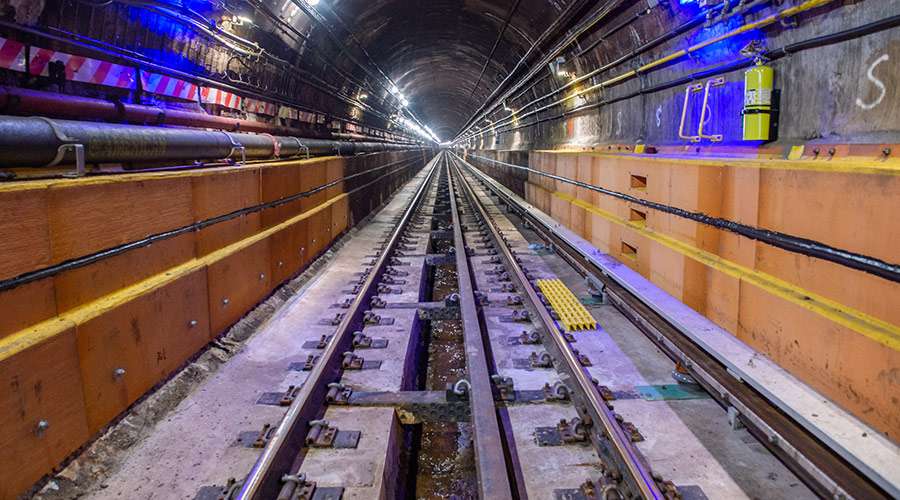
Moreover, borrowing could become more expensive for the MTA, as rating agencies have downgraded its revenue bonds since the pandemic began, he noted.
In terms of capital investment, DiNapoli notes the MTA's 2020-2024 capital plan remains at risk since the agency halted infrastructure projects to reallocate capital funding to cover operational costs. MTA already has reduced the program's scope and delayed the start of new projects.
Bad timing for subway modernization
For the subway system, the pandemic's timing couldn't have been worse, coming two years after NYCT faced another type of crisis. Following years of under-investment and deferred maintenance, NYCT was struggling with frequent delays and a reputation for being unreliable. As a result, MTA drafted a plan to tackle critical maintenance issues and other repairs. By 2019, those efforts started producing some results with record on-time performance.
Although the awarding of new capital work remains on hold, Gov. Cuomo this summer announced plans to accelerate construction on $2 billion worth of subway projects while ridership was down due to the pandemic. Those projects already received funding and do not include the capital plan's modernization projects.
Projects on that accelerated timeline include:
• Launching the F Train's Rutgers Tube rehabilitation. A contract for that project was awarded in July, four years ahead of the original schedule.The tunnel — one of 11 that were substantially damaged during Hurricane Sandy in 2012 — features two tubes, each of which carries the F train under the East River between the East Broadway Station in Manhattan and the York Street Station in Brooklyn. The project calls for fixing damaged infrastructure and equipment, as well as fortifying systems within the tunnel and installing end-to-end mobile phone infrastructure.
• Expediting ADA projects at 11 subway stations, including the installation of 24 new elevators;
• Rehabilitating the 138th Street Grand Concourse Station, which (as of press time) was slated to be completed one month early in October; and
• Repairing the steel, concrete conditions, structural columns and roof beams within the subway's 2/3/4/5 tunnels in Brooklyn. Upgrades include installation of drip pans and guardrails. The accelerated schedule shaved 10 months off the project by increasing work up to 25 percent during overnight closures. The updated timeline reduced the contract duration from 40 months to 33 months and preliminary work began in August.
Also completed during the pandemic was the L Train's East River Tunnel project, which wrapped up in late April, three months ahead of schedule and about $100 million less than budgeted. Repairs to the tunnel — which was damaged by saltwater during Hurricane Sandy in 2012 — were sped up by applying innovative technologies and new construction methods that enabled NYCT trains to continue using the tunnel throughout construction. Initially, NYCT planned to close the entire L Tunnel to demolish and reconstruct the infrastructure.
While still able to mark progress on some critical projects, MTA officials remain anxious over the subway's future should Congress not provide the needed $12 billion in federal money. Over the long term, major "hallmark" infrastructure projects that could be sidelined indefinitely include the Second Avenue Subway extension into Harlem, as well as the purchase of new electric buses and subway cars, the New York Times reported in August.
Later this month, MTA's board is scheduled to receive a financial plan and budget for FY2021 and beyond. If Congress still hasn't responded with additional federal funding, the proposed transit cuts would be devastating, Foye said Oct. 23 during an interview on WCBS.
"Economic activity in the New York region would decline by about $100 billion and it'd be a loss of about 350,000 jobs — about 300,000 in New York City," he said.
Email questions or comments to julie.sneider@tradepress.com.
Keywords
Browse articles on Metropolitan Transportation Authority MTA New York City Transit NYCT COVID-19 pandemic rail suppliers Alstom Bombardier Transportation Siemens Corp. Patrick Foye federal funding Congress Metro North Railroad Long Island Rail Road CARES Act Gov. Andrew Cuomo F Train Rutgers Tube rehabilitation L Train East River projectContact Progressive Railroading editorial staff.


 2025 MOW Spending Report: Passenger-rail programs
2025 MOW Spending Report: Passenger-rail programs
 Gardner steps down as Amtrak CEO
Gardner steps down as Amtrak CEO
 Guest comment: Oliver Wyman’s David Hunt
Guest comment: Oliver Wyman’s David Hunt
 Women of Influence in Rail eBook
Women of Influence in Rail eBook
 railPrime
railPrime